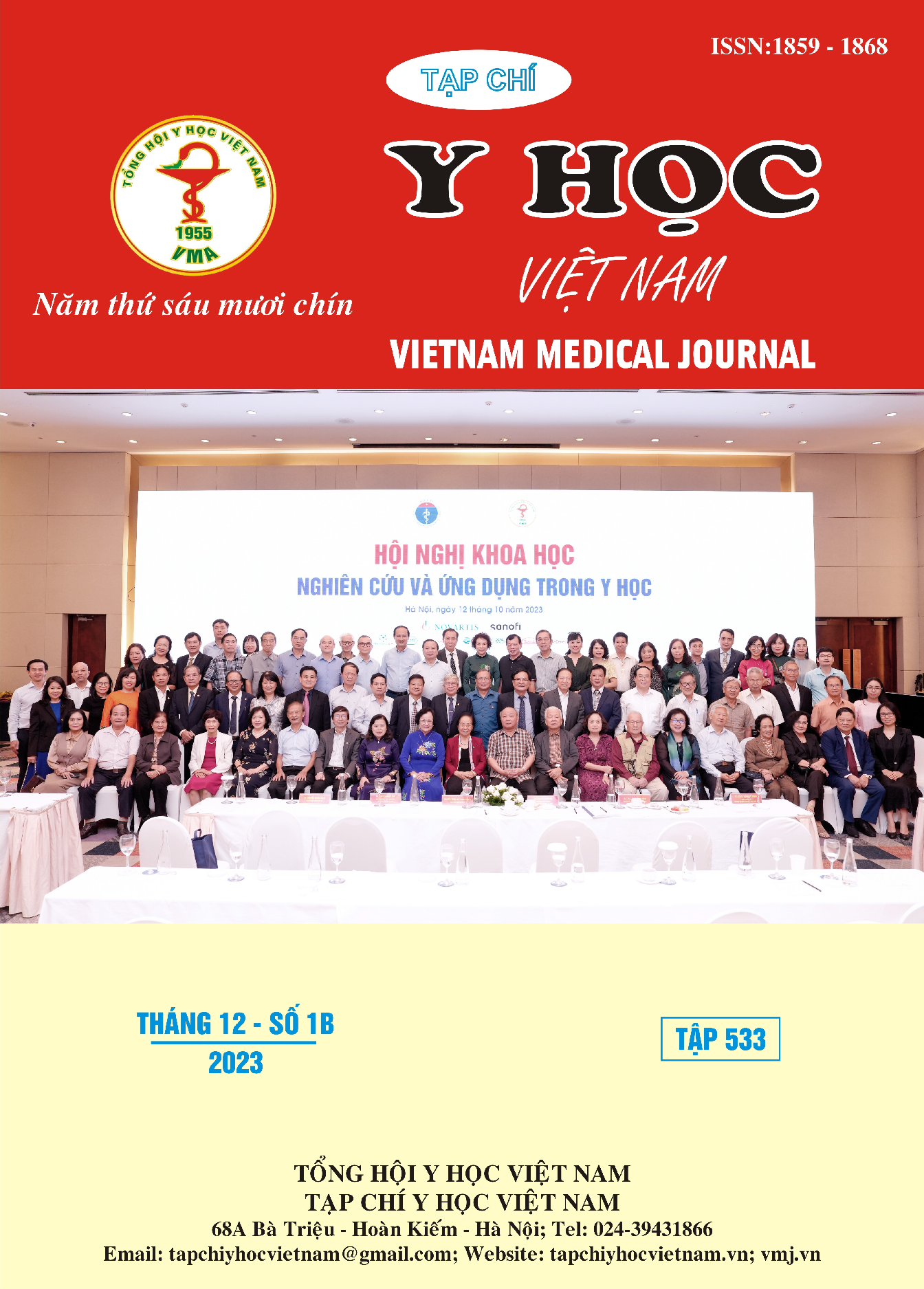KẾT QUẢ SỚM ĐIỀU TRỊ TẮC HẸP ĐỘNG MẠCH TẦNG CHẬU VÀ ĐÙI MẠN TÍNH BẰNG CAN THIỆP NỘI MẠCH TẠI BỆNH VIỆN CHỢ RẪY
Nội dung chính của bài viết
Tóm tắt
Đặt vấn đề: Hẹp tắc động mạch chi dưới mạn tính thường xảy ra trên nhiều tầng của động mạch, khi điều trị thường kết hợp can thiệp nhiều tầng cùng lúc trong một phiên can thiệp. Do đó chúng tôi thực hiện nghiên cứu này. Mục tiêu: Đánh giá kết quả sớm can thiệp nội mạch trong điều trị tắc hẹp động mạch tầng chậu và đùi mạn tính trong cùng một phiên can thiệp. Đối tượng và phương pháp nghiên cứu: Nghiên cứu hồi cứu mô tả, có 47 bệnh nhân với 47 động mạch tầng chậu và đùi được can thiệp. Thời gian thực hiện từ tháng 6/2016 đến tháng 6/2017, tại khoa Phẫu thuật Mạch máu, Bệnh viện Chợ Rẫy. Kết quả: Trong 47 trường hợp, có 29,8% kết hợp nong bóng và đặt stent, 70,2% nong bóng đơn thuần, không có trường hợp chỉ đặt stent đơn thuần. Đánh giá sau can thiệp: thành công về kỹ thuật đạt 95,7%; thành công về huyết động đạt 80,9%, ABI trung bình tăng từ 0,30 lên 0,53 (p<0,001); thời gian nằm viện sau can thiệp trung bình là 4,1 ngày. Sau 1 năm theo dõi cho thấy cải thiện lâm sàng rõ rệt: xếp loại Rutherford lần lượt là: loại 0 (31,8% so với 0%), loại 1 (18,2% so với 6,3%), loại 2 (25,0% so với 4,3%), loại 3 (15,9% so với 4,3%), loại 4 (4,5% so với 8,5%), loại 5 (2,3% so với 68,1%), và loại 6 (2,3% so với 8,5%), thành công về lâm sàng đạt 85,1%; thành công về huyết động đạt 83,0%, ABI trung bình tăng lên 0,64 (p<0,001); tỉ lệ lưu thông thì đầu đạt 85,1%. Kết luận: Phương pháp can thiệp nội mạch trong điều trị tắc hẹp động mạch chậu và đùi mạn tính là phương pháp mang lại hiệu quả cao áp dụng được trong điều kiện Việt Nam.
Chi tiết bài viết
Từ khóa
can thiệp nội mạch, tỉ lệ lưu thông thì đầu, tắc hẹp động mạch chậu – đùi.
Tài liệu tham khảo
2. Bhatt DL, Steg P, Ohman E, et al. International prevalence, recognition, and treatment of cardiovascular risk factors in outpatients with atherothrombosis. JAMA. 2006; 295(2):180-189. doi:10.1001/jama.295.2.180
3. Gerhard-Herman MD, Gornik HL, Barrett C, et al. 2016 AHA/ACC Guideline on the Management of Patients With Lower Extremity Peripheral Artery Disease: Executive Summary: A Report of the American College of Cardiology/American Heart Association Task Force on Clinical Practice Guidelines. Journal of the American College of Cardiology. Mar 21 2017;69 (11):1465-1508. doi:10.1016/j.jacc.2016.11.008
4. Vĩnh ĐD. Kết quả ban đầu can thiệp nội mạch điều trị hẹp tắc động mạch chậu. báo cáo khoa học. Tạp chí Điện quang Việt Nam 2012;
5. Vogel TR, Symons RG, Flum DR. A population-level analysis: the influence of hospital type on trends in use and outcomes of lower extremity angioplasty. Vascular and endovascular surgery. Feb-Mar 2008;42(1):12-8. doi:10.1177/1538574407308203
6. van Overhagen H, Spiliopoulos S, Tsetis D. Below-the-knee interventions. Cardiovascular and interventional radiology. Apr 2013;36(2):302-11. doi:10.1007/s00270-013-0550-1
7. Hùng TĐ. Nghiên cứu đặc điểm lâm sàng, cận lâm sàng và kết quả điều trị can thiệp nội mạch ở bệnh nhân bệnh động mạch chi dưới mạn tính. Luận văn Tiến sỹ y học, Học viện Quân Y. 2016:107-115.
8. Kristina A. Giles M, Frank B. Pomposelli, MD, Allen D. Hamdan, MD, Seth B. Blattman, MD, Haig Panossian, BS, Marc L. Schermerhorn, MDemail. Infrapopliteal angioplasty for critical limb ischemia: Relation of TransAtlantic InterSociety Consensus class to outcome in 176 limbs. Journal of Vascular surgery. 2008;48(1):9.
9. Cronenwett JL, Johnston KW. Rutherford's vascular surgery. 2014.
10. White C. Vascular Medicine and Endovascular Interventions. Blackwell Futura; 2007.


